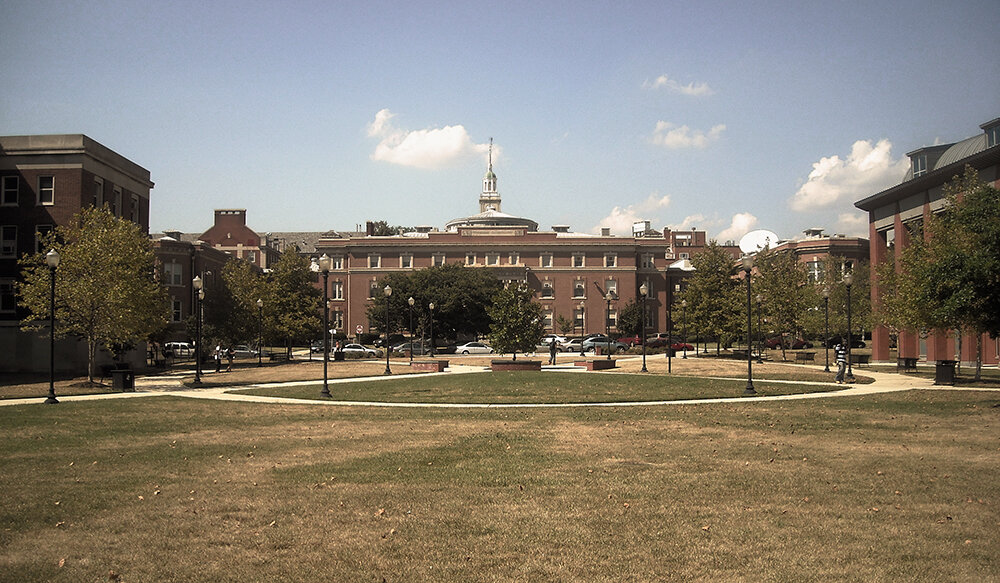Daniel Hale Williams
Founder of the First Black Hospital in the U.S.
Dr. Daniel Hale Williams pictured with black nurses posing in front of Provident Hospital, which he founded.
Daniel Hale Williams was a black physician who did the impossible during a period that produced few men of his distinction among black Americans. He worked on the south side of Chicago as a surgeon and physician to inner-city patients for years while observing the many barriers blacks faced in the medical profession. To that end, Dr. Williams founded a black-owned interracial hospital called Provident—the first of its kind in America—and, in 1893, he performed one of the earliest successful heart surgeries in the world.
Daniel Hale Williams was born in Hollidaysburg, Pennsylvania, on January 18, 1856. He was the fifth of seven children. His father, Daniel Hale Williams II, was a mixed-race barber who inherited the business from his father before him. When Daniel Hale Williams II died, Daniel’s mother, Sara Prince Williams, uprooted the family several times, moving from Hollidaysburg to Annapolis and Baltimore, Maryland. To ease the burden she had to bear alone, Sara sent Daniel to live with family friends in Janesville, Wisconsin. At age 17, Daniel followed in the footsteps of his father and grandfather and became a barber. He also played bass violin on the side, but he quickly realized that neither profession was his calling.
Daniel shifted his focus to education. He attended secondary school in Wisconsin, and by age 20, became an apprentice to the state’s former surgeon general, Dr. Henry Palmer. Dr. Palmer encouraged Daniel to further his medical studies, and with his sponsorship, Daniel moved to Illinois and attended Chicago Medical College. After earning his medical degree in 1883, Dr. Daniel Hale Williams served as a surgeon at Chicago’s South Side Dispensary. Since the clinic was in an integrated neighborhood, he treated both black and white patients. Dr. Williams also taught anatomy classes at Chicago Medical College, and he was the first black medical professional hired by the City Railway Company as a private surgeon.
Provident Hospital students observing a doctor perform a mock operation in 1942. Photo courtesy of the Library of Congress.
In 1889, Dr. Williams was appointed to the board of health by the governor of Illinois. But he was still a lone representative within the black community. Dr. Williams longed to create a hospital that could accommodate white and black doctors alike, where black women could also train as nurses. Dr. Williams spent months working to make his dream a reality. He raised funds directly within the black community and, by May 1891, Provident Hospital and Nursing Training School opened its doors. The hospital featured an integrated staff from the beginning.
Chicago’s black population finally had a dedicated facility that offered medical care with no discrimination. Provident Hospital was also the setting for the historic heart surgery performed by Dr. Williams. Doctors rarely operated on the heart in those days, and Dr. Williams would have received sharp disapproval at another facility. It all started in July 1893, when a young Chicago resident named James Cornish arrived at Provident with a stab wound in the chest. After being admitted, Cornish went into shock, and Dr. Williams surmised that the problem centered on the heart. He immediately went to work. While he performed the surgery, Dr. Williams was assisted by six doctors on staff, four white and the other two black.
As a medical pioneer, Dr. Williams did not have many previous heart surgeries on which to rely. He administered substandard anesthesia—given his limitations—and inspected the victim’s chest wound in the cramped operating room. He decided that the best course of action was to access Cornish’s heart through the rib cartilage. Dr. Williams began cutting. Under the chest wall, there was a rupture in Cornish’s left internal mammary artery, so Dr. Williams sutured the wound.
Next, he noticed that the membranous sac around the heart, known as the pericardium, had been punctured by a knife close to the left coronary artery. As the patient bled, with no possibility of a transfusion, Dr. Williams applied a salt solution rinse to the wound and grasped its edges with forceps as the heart kept beating. Dr. Williams stitched the area as best he could and completed the surgery. After 51 days, James Cornish was allowed to leave the hospital, and he lived to tell his tale for another 20 years. Daniel Hale Williams had made history, and despite being black, the media celebrated his success.
The former Freedmen’s Hospital building, seen here in 2008 as the John H. Johnson School of Communications. Photo courtesy of Wikimedia Commons.
In 1894, he moved to Washington, D.C., to serve as chief surgeon of the Freedmen’s Hospital, which was a high honor. Dr. Williams worked to revitalize the hospital and decrease the mortality rate. He improved the facilities, implemented new medical procedures, and increased the staff with qualified physicians. He also introduced an ambulance service and again launched training programs for black nurses and interns. The hospital made a complete turnaround within a year. But as time passed, Washington politics and bloated medical bureaucracy grated on Dr. Williams. It is at the Freedmen’s Hospital that Dr. Williams met Alice Johnson, whom he married. The newlywed couple settled in Chicago in 1898 after he resigned from his post. Dr. Williams returned to Provident Hospital and remained until 1912. The following year, he joined the American College of Surgeons as a charter member.
After leaving Provident, Dr. Williams took a position as a staff surgeon at St. Luke's Hospital in Chicago. His wife Alice passed away in 1924 due to complications of Parkinson’s disease. A stroke he suffered in 1926 forced him to resign. He lived in retirement for five years in Idlewild, Michigan, then an affluent resort town. While at home, Dr. Williams succumbed to another stroke on August 4, 1931. He was 75 years of age.
You may also be interested in:

This article appears in 45 People, Places, and Events in Black History You Should Know.
Available from Amazon.com, BN.com, and other retailers.





Born a slave in 1818, Bridget “Biddy” Mason died a free woman, and the wealthiest resident of Los Angeles, California. She was an astute businesswoman who was beloved by the people of her city.